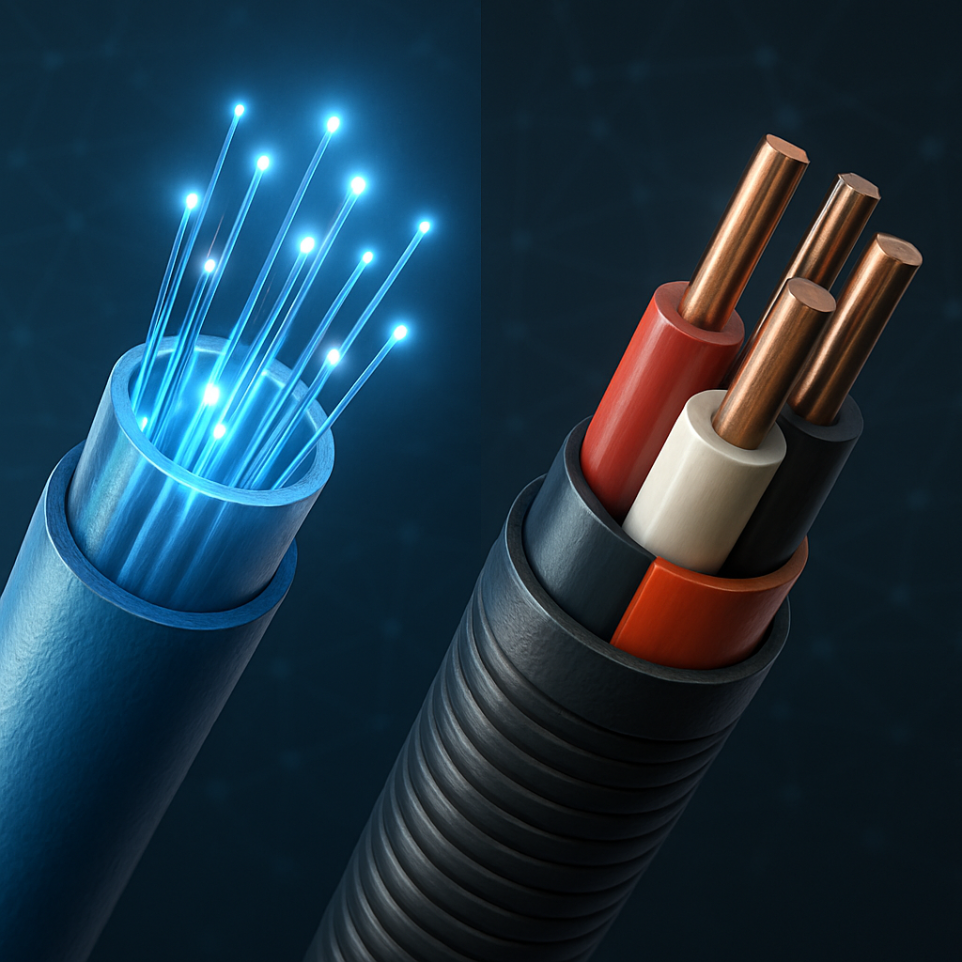
Overview
Quantum Fiber represents a significant evolution in residential and business internet service, positioned as a premium fiber-optic offering from Lumen Technologies (formerly CenturyLink). This comprehensive analysis examines Quantum Fiber’s development, technical capabilities, customer experience, practical applications, and future trajectory as of May 2025.
#11 provider: Quantum Fiber’s Rank Among US Fiber Providers
Launched as a distinct brand to differentiate from CenturyLink’s legacy DSL services, Quantum Fiber delivers symmetrical high-speed internet through fiber-optic technology. The service has established itself as the 11th-largest fiber internet network in the United States [18], with availability across 17 states primarily in the Western and Midwestern regions. Quantum Fiber’s core value proposition centers on symmetrical speeds up to 8 Gbps, no data caps, no contracts, and simplified pricing structures.
This analysis reveals both strengths and challenges in Quantum Fiber’s market position. While the service offers technically superior infrastructure with impressive speed capabilities and reliability, it faces significant limitations in availability (covering only about 2% of U.S. households) [1] and inconsistent customer service experiences. The company’s network expansion continues at a pace of approximately 500,000 new locations annually [21], though analysts question whether this is sufficient to compete effectively with other fiber providers.
For consumers and small businesses within Quantum Fiber’s service areas, the offering presents a compelling option with competitive pricing, advanced technology including WiFi 7 capabilities, and performance metrics that typically exceed those of cable and DSL alternatives. However, potential customers should carefully consider the specific service availability in their location, equipment options, and reported customer service experiences when evaluating Quantum Fiber as their internet service provider.
Background and Development
Key Points
Quantum Fiber emerged as Lumen Technologies’ strategic response to changing market dynamics in the internet service provider landscape. This section explores its origins, corporate structure, and evolution from CenturyLink’s fiber offerings into a distinct brand with its own market positioning and technology approach.
Origins and Corporate Structure

The Lumen Technologies Building showcases the company’s architectural presence.
Quantum Fiber is a relatively new brand in the internet service provider landscape, owned by parent company Lumen Technologies. As the seventh-largest ISP in the United States, Lumen serves approximately 3 million customers through its combined internet services, which include both fiber and DSL offerings. [2] [8] [9]
Quantum Fiber represents Lumen’s strategic effort to differentiate its fiber services from its legacy DSL business. The brand was created as a rebranding of CenturyLink’s fiber product to better align with Lumen’s values of “no data caps, transparent pricing, and top-tier customer service.” [18] This separation allows Lumen to position Quantum Fiber as a premium service distinct from the CenturyLink brand, which continues to operate DSL services in many areas.
The relationship between these brands is significant, as customer satisfaction data reveals a stark contrast in service quality. According to the American Customer Satisfaction Index, Quantum Fiber ranks 16 points higher in customer satisfaction compared to CenturyLink’s DSL service. [2] [8] This substantial difference highlights why Lumen has chosen to create a separate brand identity for its fiber offerings.
Evolution and Market Position
Quantum Fiber has positioned itself as a premium fiber internet provider, focusing on high-speed, symmetrical connections with simplified pricing and customer-friendly policies. The service is currently the 11th-largest fiber internet network in the United States, though Lumen has expressed ambitions to become one of the top five providers. [18]
As of May 2025, Quantum Fiber’s subscriber base has grown significantly. According to Lumen’s Q1 2025 earnings report, the service reached 1,116,000 fiber broadband subscribers, an increase from 952,000 in Q1 2024. [33] This growth trajectory reflects Lumen’s strategic focus on expanding its fiber footprint and transitioning customers from legacy services to the Quantum Fiber platform.
In December 2022, Lumen announced plans to expand Quantum Fiber to more than 30 cities and metropolitan areas across the United States, offering multi-gigabit speeds and new multi-gig rates in select locations. [36] This expansion is part of Lumen’s broader strategy to build out its fiber network to over 12 million locations across its multistate footprint, with 3 million sites already enabled by the end of 2022. [36]
The company’s market positioning emphasizes several key differentiators:
- Symmetrical speeds up to 8 Gbps in select areas
- No data caps or contracts
- Transparent “price for life” guarantee (though this has been inconsistently applied, as discussed later)
- Advanced WiFi technology, including WiFi 7 certification
- 24/7 customer support
As Lumen continues to invest in its fiber infrastructure, Quantum Fiber has become an increasingly important component of the company’s growth strategy. In 2025, Lumen planned to allocate approximately $1 billion in capital expenditure to Quantum Fiber expansion. [35]
Service Area and Availability
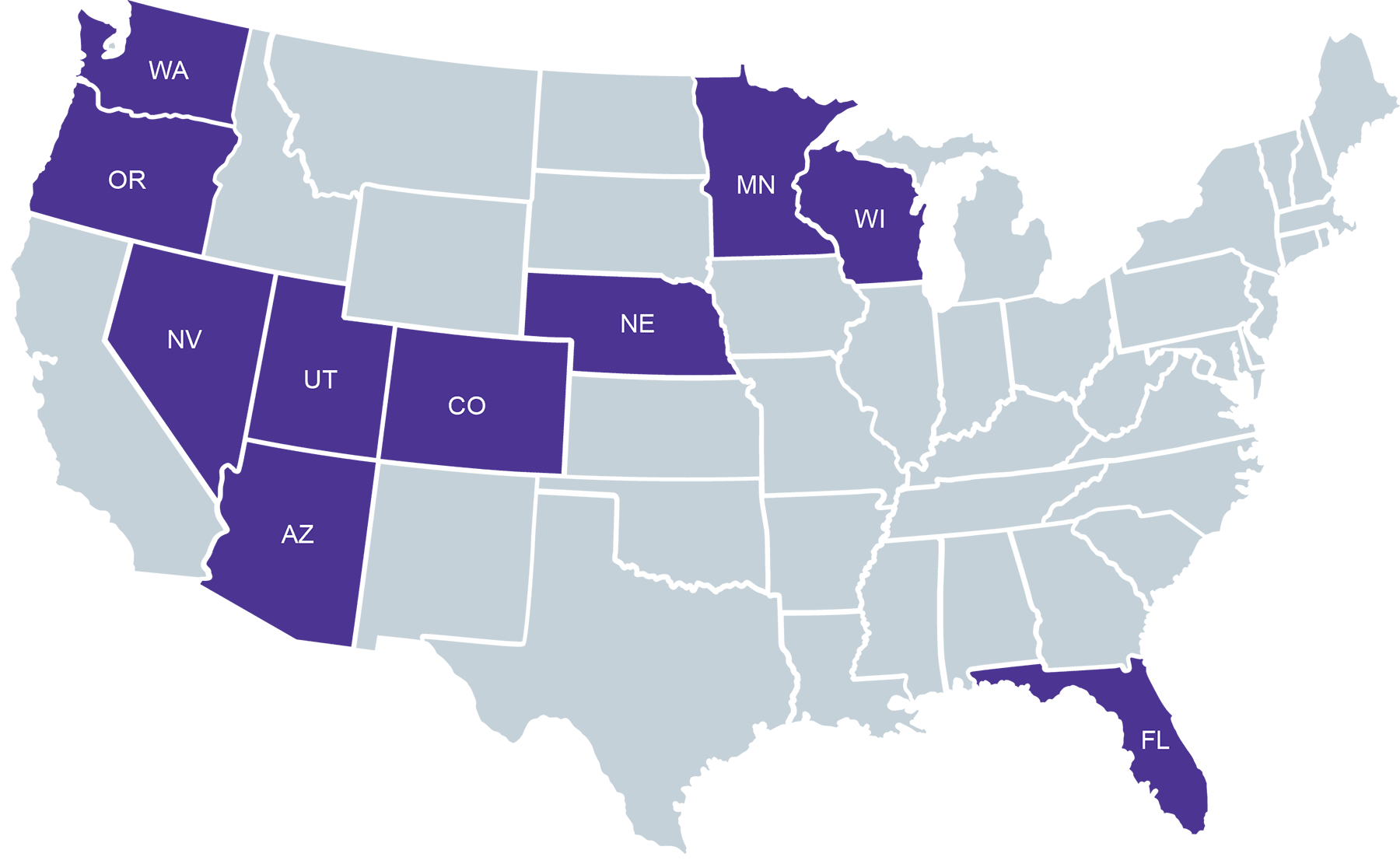
Quantum Fiber’s service area spans multiple states primarily in the Western and Midwestern United States.
Quantum Fiber’s availability remains limited compared to larger internet service providers, covering approximately 2% of U.S. households. [1] The service is available in 16-17 states, primarily in the Western and Midwestern United States, with significant coverage in Florida, Nevada, and Minnesota. [1] [18]Quantum Fiber Coverage of US Households
As of 2025, Quantum Fiber operates in 21 cities across these states:
- Arizona: Phoenix, Tucson
- Colorado: Colorado Springs, Denver
- Florida: Fort Myers, Ocala, Orlando, Tallahassee
- Idaho: Boise
- Iowa: Des Moines
- Minnesota: Minneapolis, St. Paul
- Montana: Bozeman
- Nebraska: Omaha
- Nevada: Las Vegas
- New Mexico: Albuquerque
- Oregon: Portland
- Utah: Salt Lake City
- Washington: Seattle, Spokane
- Wyoming: Cheyenne [19]
Within these service areas, availability can vary dramatically by city, ranging from as low as 0.02% in some areas to over 95% in others. [20] The service covers 1,040 cities and 1,449 zip codes across multiple states, though the density of coverage varies significantly. [20]
Lumen’s expansion strategy for Quantum Fiber involves building fiber to approximately 500,000 new locations per year. In 2024, the company maintained this pace from the previous year, though some industry analysts have questioned whether this rate is sufficient to compete effectively with other fiber providers. [21] As one analyst noted, “Our gripe is that they claim an 8-10MM location target for fiber deployment, with a starting point of 3.7MM, and they are only marching towards that target at a pace of ~500k per year. It will take a decade to get there at this pace. In the meantime, they are being targeted by overbuilders.” [21]
Technical Infrastructure and Capabilities
Key Points
Quantum Fiber leverages advanced fiber-optic technology to deliver internet service that significantly outperforms traditional broadband options. The infrastructure utilizes light signals through glass cables for near-speed-of-light data transmission, enabling symmetrical multi-gigabit speeds. While the service offers impressive technical specifications, actual performance can vary based on installation type, equipment configuration, and device limitations.
Fiber Technology Foundation
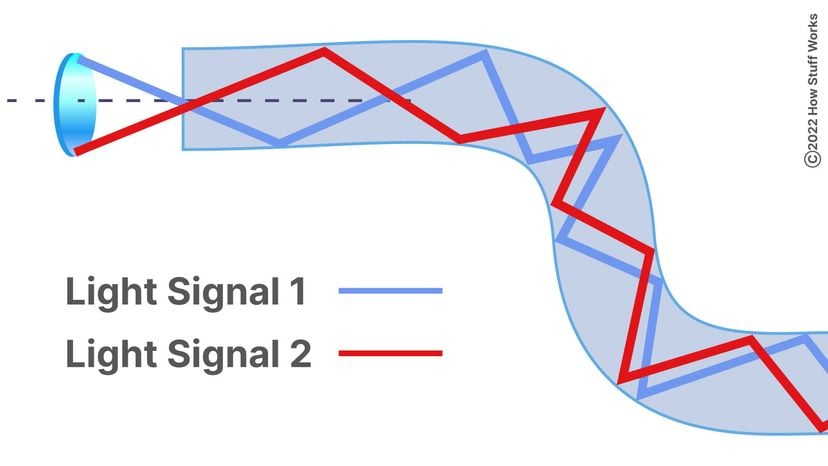
Quantum Fiber utilizes fiber-optic technology as the foundation of its internet service. Unlike traditional copper-based internet connections, fiber-optic lines transmit data using light signals through thin glass cables, allowing for significantly faster speeds and greater reliability. [7] [9] As Quantum Fiber explains, “Fiber internet delivers lightning-fast speeds by using glass cables that transmit data at nearly the speed of light. Most fiber cables are bundled and then buried underground which helps protects them from potential interruptions like extreme weather.” [7]
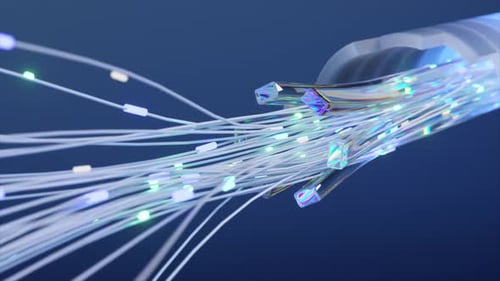
Fiber optic cables transmit data using light signals through thin glass strands.
This technological approach provides several inherent advantages:
- Speed capability: The fiber-optic infrastructure can support multi-gigabit speeds that far exceed what’s possible with traditional copper-based connections.
- Symmetrical performance: Unlike cable or DSL connections that typically offer much slower upload than download speeds, fiber technology enables equal upload and download rates.
- Signal integrity: Fiber-optic signals experience less degradation over distance compared to electrical signals in copper wires.
- Reliability: Underground fiber cables are less susceptible to weather-related disruptions.
Quantum Fiber implements this technology through two primary deployment methods:
- Fiber-to-the-Home (FTTH): The ideal configuration where fiber-optic cable runs directly to the customer’s premises, providing the full benefits of fiber technology.
- Fiber-to-the-Curb (FTTC): In some cases, Quantum Fiber uses a hybrid approach where fiber runs to a neighborhood terminal, with the final connection to homes made via coaxial cable. As noted in several sources, “In some cases, though, Quantum Fiber advises that it may need to run Fiber-to-the-Curb (FTTC), with the last few feet of line to your house connected with coaxial cable. This is important, because even those few feet of coaxial cable will slow your upload speeds.” [8] [9]
The network infrastructure employs advanced fiber technologies like XGSPON (10 Gigabit Symmetric Passive Optical Network) and GPON (Gigabit Passive Optical Network), enabling the high-speed capabilities of the service. [15]
Speed Tiers and Performance
Quantum Fiber Speed Tiers and Monthly Pricing
Quantum Fiber offers multiple speed tiers, with availability varying by location. The service’s speed offerings range from entry-level plans starting at 200 Mbps to premium multi-gigabit options up to 8 Gbps. [2] [5] [9]
The current speed tiers as of May 2025 include:
| Speed Tier | Download Speed | Upload Speed | Typical Monthly Price |
|---|---|---|---|
| 200 Mbps | 200 Mbps | 200 Mbps | $30 |
| 500 Mbps | 500 Mbps | 500 Mbps | $50 |
| 940 Mbps/1 Gbps | 940-1000 Mbps | 940-1000 Mbps | $65-75 |
| 3 Gbps | 3000 Mbps | 3000 Mbps | Varies by market |
| 8 Gbps | 8000 Mbps | 8000 Mbps | $165 |
These speeds are significantly faster than the average U.S. internet connection. According to Quantum Fiber, their 3 Gbps plans are “15 times faster than the average U.S. download speed, with 8 Gbps clocking in at 40 times faster.” [5]

All plans offer symmetrical speeds, meaning upload and download rates are identical. This is particularly valuable for activities that require significant upload bandwidth, such as video conferencing, cloud backup, content creation, and online gaming. [6]
It’s important to note that while these are the advertised speeds, actual performance can vary based on several factors:
- Device limitations: As Quantum Fiber explains, “No matter how fast the internet service, devices have their own speed limits. Many devices will be slower than your core connection speed, especially when you’re running at gigabit speeds. For example, some laptops only support 100 or 200 Mbps.” [5]
- Connection method: WiFi connections typically deliver lower speeds than direct wired connections, and the specific WiFi technology (WiFi 6, WiFi 7, etc.) impacts maximum throughput.
- Network congestion: While fiber networks generally maintain consistent performance regardless of neighborhood usage, other factors in the broader internet infrastructure can affect speeds.
- Installation type: As mentioned previously, FTTC installations may experience slightly reduced performance compared to full FTTH installations. [2]
Real-world performance reports from customers generally indicate that Quantum Fiber delivers speeds close to advertised rates. Multiple Reddit users report receiving speeds near their plan rates, with one user stating, “Quantum Fiber is great – no issues. Ping times to providers (MS, Google, Cloudflare) are consistently 2-3ms, as reported by my Ubiquity Dream Router.” [13] Another user mentioned, “Getting about 3ms ping times with almost 0% packet loss. Its pretty solid. Not getting the gbps they said, but its damn fast.” [12]
Network Reliability and Infrastructure
99.9%
Quantum Fiber Network Reliability
Quantum Fiber claims 99.9% network reliability based on network uptime or availability. [10] [42] This level of reliability translates to less than nine hours of downtime per year. [42] This high reliability is attributed to several factors:
- Underground fiber deployment: Most of Quantum Fiber’s cables are buried underground, protecting them from weather-related disruptions. [7]
- Fiber technology inherent advantages: Fiber-optic cables are less susceptible to electromagnetic interference and signal degradation compared to copper cables.
- Network architecture: The service uses modern network design principles that incorporate redundancy and resilience.
Customer reports generally support the reliability claims, with many users experiencing minimal outages. As one Reddit user noted, “I use Century Link’s fiber optic (not quantum) and for $65 a month I get gig speeds. In the 3 years we’ve had it, we’ve had 1 outage, and that was because a construction site down the road didn’t call before they dug, and went right through the cable.” [12] Another user reported, “Quantum here, been over a year, rock solid other than 36 hours due to a rodent getting in the box and chewing through the fiber. Can’t complain; speeds as advertised and much more consistent than any other ISP I’ve had.” [12]

However, some customers have reported more significant issues, particularly with technical support and resolution times when problems do occur. One frustrated customer shared, “When it works, it’s great, but when it’s down, you’re easily out for 3 days because some tech unplugged you up the street (true story).” [29]
Equipment and Technology
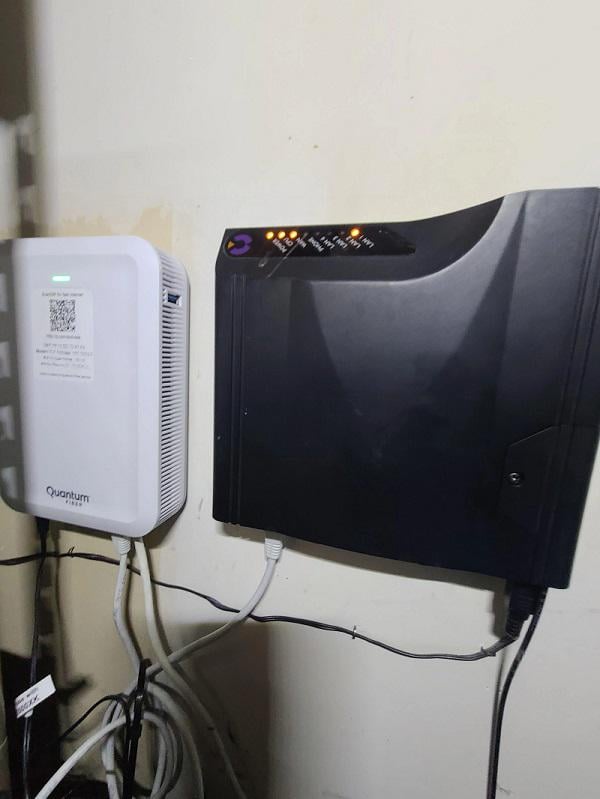
Quantum Fiber installation showing the ONT and router mounted on a wall.
Quantum Fiber provides customers with specialized equipment to connect to their fiber network. The specific equipment varies depending on when and where customers sign up for service. [14]
The primary components include:
- Optical Network Terminal (ONT)/SmartNID: This device converts the optical signals from the fiber line into electrical signals that can be used by home networking equipment. Quantum Fiber offers two main types:
- Stand-alone modems that can be leased
- Permanently installed wall-mounted SmartNID devices [14]
- WiFi Router/Pods: For wireless connectivity, Quantum Fiber offers their 360 WiFi system, which can include:
- WiFi 6 pods for older installations
- WiFi 7 certified devices for newer installations (as of January 2024) [17]

The Q1000K SmartNID is one of the company’s advanced fiber network terminals, combining modem and network terminal functions into a single, permanently installed device. This device is capable of supporting speeds up to 10 Gbps, though actual in-home speeds may vary based on router setup and other factors. [15]
For WiFi connectivity, Quantum Fiber made significant technological advances in early 2024 when it became “the first company in the industry to achieve a Wi-Fi CERTIFIED 7™ device with its custom-developed solution.” [17] These WiFi 7 devices offer superior coverage, with one device capable of covering up to 90% of a home’s square footage. [17]
The WiFi 7 equipment includes two main models:
- W1700K: A desk or wall mount device that covers 90% of homes
- W1701K: A wireless extender pod for larger homes [22] [23]
These devices support multiple users with 2.4GHz, 5GHz, and 6GHz radios, enabling high-speed data transmission with less than 3 milliseconds of latency. [17] The WiFi 7 technology represents a significant upgrade over previous standards, offering “up to 8X faster wireless connection speeds for capable devices, up to 25% greater WiFi coverage compared to WiFi 6, over 100 concurrent devices can stream simultaneously, and lower latency with reduced transmission time.” [22]
It’s worth noting that customers can use their own WiFi equipment instead of Quantum Fiber’s provided devices, though this means losing access to the company’s security features and technical support for WiFi-related issues. [14]
Service Plans and Pricing
Key Points
Quantum Fiber offers a range of speed tiers with symmetrical upload and download capabilities, positioning itself as a premium yet competitively priced option in the fiber internet market. While the company promotes a “price for life” guarantee, customer experiences reveal inconsistent application of this policy. The service distinguishes itself with no data caps, no contracts, and included equipment, though certain aspects of the pricing structure have changed over time.
Current Plan Structure
Quantum Fiber offers a straightforward plan structure based primarily on speed tiers. As of May 2025, the service provides several options ranging from entry-level to ultra-high-speed plans. [2] [4] [9]
In select places, you can access blazing multi-gigabit speeds of up to 8,000 megabits per second, making Quantum Fiber one of the faster fiber internet providers in the game.
The current plan lineup includes:
| Speed Tier | Monthly Price | Features |
|---|---|---|
| 200 Mbps | $30 | Symmetrical speeds, no data caps, no contracts |
| 500 Mbps | $50 | Symmetrical speeds, no data caps, no contracts |
| 940 Mbps/1 Gbps | $65-75 | Symmetrical speeds, no data caps, no contracts |
| 3 Gbps | Varies by market | Symmetrical speeds, no data caps, no contracts |
| 8 Gbps | $165 | Symmetrical speeds, no data caps, no contracts |
All plans include:
- Symmetrical upload and download speeds
- No data caps
- No annual contracts
- Free professional installation
- Equipment rental (for an “initial period”) [1] [3]
The availability of specific speed tiers varies significantly by location. While the 500 Mbps and 940 Mbps/1 Gbps plans are widely available across Quantum Fiber’s service areas, the multi-gigabit options (3 Gbps and 8 Gbps) have “extremely limited availability.” [3] As CNET notes, “In select places, you can access blazing multi-gigabit speeds of up to 8,000 megabits per second, making Quantum Fiber one of the faster fiber internet providers in the game.” [1]
According to Allconnect, “Quantum Fiber has a few speed tiers available, depending on where you live. Its fastest plan offers speeds up to 8,000 Mbps and is great for larger households with multiple devices streaming, gaming and working from home all at once. However, availability is extremely limited.” [3]
“Price for Life” and Pricing Stability
Internet Service Customer Satisfaction (ACSI 2024)
One of Quantum Fiber’s key marketing points is its “Price for Life” guarantee, which promises that the initial plan rate remains constant as long as customers keep the same plan and don’t move or make changes. [1] [3] This approach contrasts with many other internet service providers that offer promotional rates that increase after an initial period.
As CNET explains, “CNET’s survey found that 63% of US adults saw their home internet prices increase last year. Many ISPs, particularly cable internet providers, have promotional and standard pricing. The promotional rate is often good for one or two years, after which the price jumps to the standard rate.” [1]
However, customer experiences suggest that the “Price for Life” guarantee has not been consistently honored. Multiple Reddit users reported unexpected price increases despite this promise:
- “It’s a bait and switch. I signed up for price for life in January 2022 for $65/month. Just got an email they are jacking up rates.” [13]
- “Starting this month, may 2024 it’s $75/month and a $3 processing fee for paying with a credit card” [13]
These reports indicate that while Quantum Fiber promotes pricing stability as a key differentiator, the actual implementation of this policy may vary. Customers have reported success in negotiating to maintain lower rates by persistently contacting customer service when faced with price increases. [13]
Equipment and Additional Costs
Quantum Fiber includes equipment rental at no additional cost for what they describe as an “initial period,” though the exact duration of this period is not clearly defined in their marketing materials. [1] The service provides either a stand-alone modem or a permanently installed wall-mounted SmartNID device, depending on when and where customers sign up. [14]
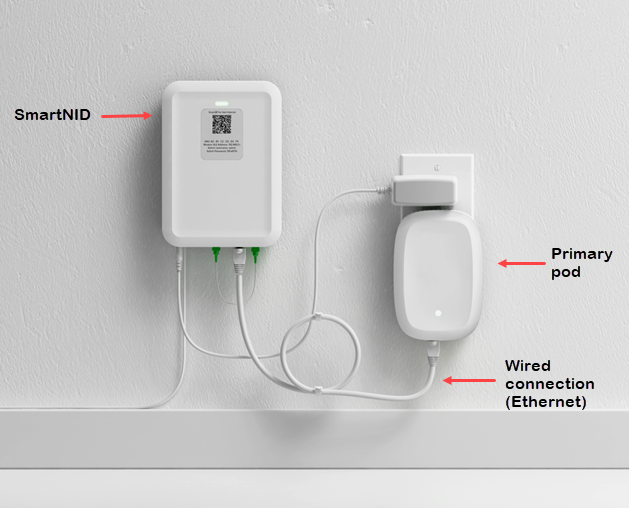
For WiFi connectivity, Quantum Fiber offers their 360 WiFi system, which includes:
- A base router/pod
- Additional pods for larger homes (up to 4 pods at no additional charge) [13]
While these are initially provided at no cost, there is some uncertainty about future charges. According to one Reddit user, “The 360 WIFI is not an introductory offer. There is no time frame if the 360 WIFI equipment would start charging. If it does, the equipment is $15 monthly.” [13]
Other potential additional costs include:
- A $3 processing fee for paying with a credit card (reported by some customers) [13]
- Fees for unreturned equipment if service is canceled (leased equipment must be returned within 30 days) [14]
It’s worth noting that customers can use their own WiFi equipment instead of Quantum Fiber’s provided devices, which might be a preferable option for those concerned about potential future equipment charges or who desire more control over their network setup. [14]
Competitive Positioning
Quantum Fiber positions itself as a premium yet competitively priced option in the fiber internet market. When compared to cable providers, Quantum Fiber emphasizes its long-term value proposition despite potentially higher initial prices.
Cable providers may have a lower starting price than Quantum Fiber, but the lower pricing may also come with slower speeds. Additionally, the low price doesn’t last forever, and cable internet will almost assuredly be the more expensive service a year or two down the road.
As CNET notes, “Cable providers such as Astound, Mediacom and Xfinity may have a lower starting price than Quantum Fiber, but the lower pricing may also come with slower speeds. Additionally, the low price doesn’t last forever, and cable internet will almost assuredly be the more expensive service a year or two down the road.” [1]
Compared to other fiber providers, Quantum Fiber’s pricing is generally competitive, especially considering the included equipment and lack of data caps or contracts. The service’s entry-level 200 Mbps plan at $30/month represents a particularly strong value proposition for households with modest internet needs.
For business customers, Quantum Fiber offers the same pricing as residential customers, which is unusual in the telecommunications industry. [10] As their business internet page states, “Transparency matters when choosing a business internet provider, and Quantum Fiber keeps things simple and clear for businesses. Pricing is free from hidden fees or promotional rates that expire, providing clarity and consistency.” [10]
Customer Experience
Key Points
The customer experience with Quantum Fiber presents a mixed picture, with high satisfaction regarding the technical performance of the service but significant frustrations with customer support, installation processes, and equipment management. While the service scores relatively well in industry satisfaction metrics, individual customer experiences vary dramatically, with particular pain points around technical support wait times, app functionality, and equipment installation practices.
Installation Process
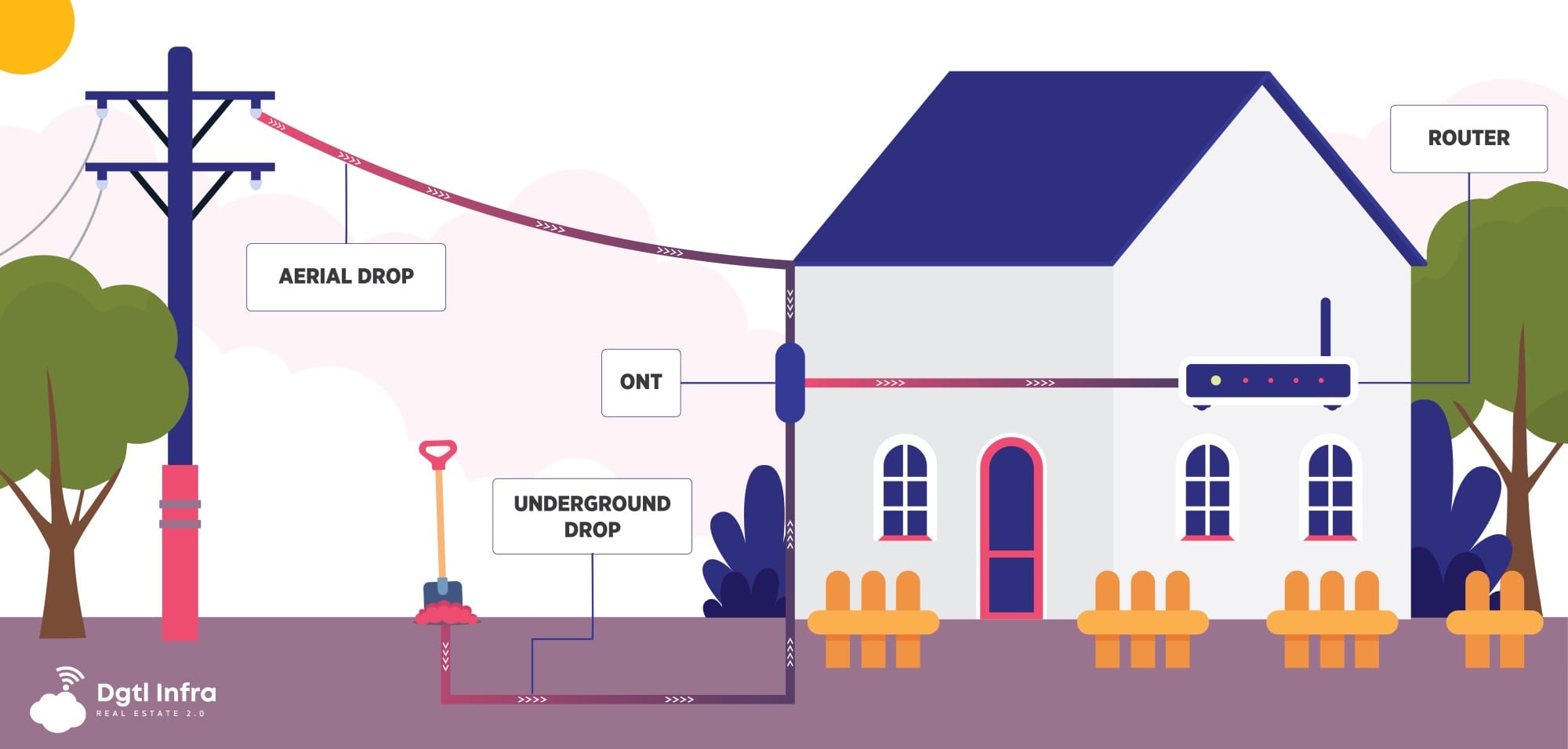
The Quantum Fiber installation process involves two distinct stages: pre-installation (placing the fiber-optic line outside) and service installation inside the building. [37] This comprehensive process typically takes approximately 3-4 hours and requires someone 18 or older to be present throughout. [37] [39]
The installation procedure follows these general steps:
- Fiber Line Placement: Before the actual installation appointment, Quantum Fiber places the fiber-optic line to the property. This can be done either by burying the line underground or hanging it above ground on utility poles. [37] This work may be performed by licensed contractors who might not wear Quantum Fiber branding. [37]
- SmartNID Installation: On the scheduled installation date, a Quantum Fiber technician brings a SmartNID device to connect the building to the fiber internet service. This device is permanently installed inside the home or business, which may require drilling a hole through the wall to connect the fiber line from outside. [37] [39]
- Equipment Setup: The technician sets up the necessary equipment, including the 360 WiFi system if selected by the customer.
- Speed Testing: After installation, the technician runs a speed test to ensure optimal performance. [39]

Customer experiences with the installation process vary widely. While Quantum Fiber currently offers free professional installation [1] [3], some customers have reported issues with the process:
- Invasive modifications without clear communication: “Upon inspecting the modem, I found that they had drilled a hole in the wall and wired a new cable in. Now I initially thought ‘oh there must be a connection within the wall’ so I unscrewed the cover but no, there was nothing.” [11]
- Scheduling difficulties: “Initially they said they couldn’t get me someone out to my apartment today but after pressing them they said they could and would get back to me soon. I waited an hour and called back after not hearing anything. After calling the technician line 3 times and about 2 seconds of dial tone, my call was dropped every time.” [11]
- Property damage concerns: Some users have reported technicians causing issues like cutting sprinkler lines or leaving cables exposed during installation. [12]
On the positive side, professional installation is included with the purchase of a Quantum Fiber plan, and the company will cover up to $1,500 of construction charges if fiber cables aren’t already installed at the location. [3] As Allconnect notes, “Professional installation is included with your purchase of a Quantum Fiber plan if you’re located in its availability footprint. If your location doesn’t have fiber cables installed yet, construction charges may apply, but don’t worry — Quantum Fiber will cover up to $1,500 of these charges and it’s unlikely to cost more than that.” [3]
Customer Support and Service
Customer support appears to be one of the most inconsistent aspects of the Quantum Fiber experience, with widely varying reports from customers. According to the American Customer Satisfaction Index, Quantum Fiber scored 76 out of 100 in customer satisfaction in 2024, ranking third among fiber internet providers. [1] [3] This score is significantly higher (16 points) than CenturyLink’s DSL service, indicating a substantial improvement in service quality under the Quantum Fiber brand. [2] [8]
This is hands-down the worst company I have every dealt with in my entire life, and that is saying something. Let me start by saying this – when it works, it’s incredible. If you every have to deal with customer service, good freaking luck.
However, individual customer experiences tell a more complex story:
Positive Experiences:
- “I got to say in my 30-year career in IT, quantum fiber was the absolute best in installation quality, customer service both in person and on the customer service phone number they give you. Stellar customer service, stellar installation, and after the modem was installed I was getting about 9.8 up and down.” [4]
- “The customer care tech support people are some of the best I’ve encountered in decades of internet service across multiple companies.” [4]
Negative Experiences:
- “Like many of us who are without service and not able to get through to any of their customer service (through calling, email, or online chat) JUST FILE A COMPLAINT WITH THE FCC. This is bullshit already. Ive been without internet for over a week and on hold for hours with never getting through to someone!!” [29]
- “This is hands-down the worst company I have every dealt with in my entire life, and that is saying something. Let me start by saying this – when it works, it’s incredible. If you every have to deal with customer service, good freaking luck.” [12]
A recurring theme in customer complaints is extremely long wait times when contacting support, with multiple users reporting wait times of 2-6 hours. [29] Technical support also appears to lack comprehensive documentation, especially for newer equipment like the WiFi 7 system. [29]
One particularly concerning pattern involves customer service representatives following rigid scripts that don’t address specific customer issues. As one frustrated customer reported: “I’m not sure if I’m talking to a bad GPT bot or an idiot. They are trying to argue with me about what hardware I actually have and when I tell them I can only connect direct to the modem and not via the router, they ask me what color the light is on the modem.” [31]
Equipment and App Experience
Quantum Fiber provides customers with equipment for connecting to their service, including either a stand-alone modem or a permanently installed SmartNID device, along with their 360 WiFi system for wireless connectivity. [14] Customer experiences with this equipment vary significantly.
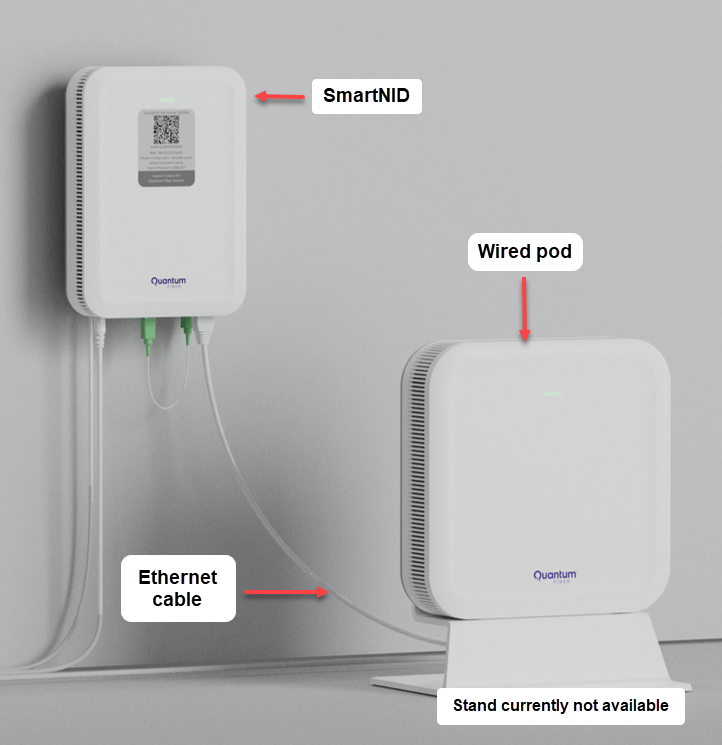
The 360 WiFi system, which creates a mesh network throughout the home, has received mixed reviews:
- “If you use the free router included with your Quantum Fiber plan, you will get their 360 Wi-Fi system. 360 Wi-Fi is a mesh network, which is much more sophisticated than a single modem/router. You will be able to set up extra Wi-Fi Pods to ensure seamless coverage of your entire space, which is especially helpful if you live in a large home or one with thick walls.” [8]
- “The provided WiFi pods have mixed reviews, with some users finding them unreliable and opting to purchase their own networking equipment.” [12]
A significant pain point for many customers is the Quantum Fiber mobile app, which is used to manage the network, control the WiFi pods, and access security features. Multiple users have reported ongoing issues with the app:
- “The quantum app (used to manage the internet and the pods) was simply not working or even registering my network thus I couldn’t troubleshoot anything. When I called to ask for assistance I was met with a response that apparently has been given out for two years; our app is being updated and had recently been combined with the 360 app hence why it was not working.” [11]
- “Quantum Fiber’s WiFi 7 equipment (W1700 model) is currently not fully compatible with their Quantum 360 app.” [28]
- “The wifi7 uses the regular QF app that you use for account access. Very limited customization. It’s crap, the Plume pods and app are way better but are not available for XGS (6500 ONT) customers.” [28]
The situation appears particularly problematic for customers with the newer WiFi 7 equipment, as reported by one user: “So I got my system installed last Saturday and I got the wifi 7 W1700 model (router or pod) with a 6500XK modem. The quantum fiber app see my devices and I connected the whole house the W1700 that’s connected to the modem. They gave me an additional pod for the living room that didn’t connect and still hasn’t.” [28]
Service Reliability and Performance
In terms of actual service performance and reliability, Quantum Fiber generally receives positive feedback from customers. The service claims 99.9% network reliability based on network uptime or availability, [10] [42] and many customer experiences support this claim:
- “Quantum here, been over a year, rock solid other than 36 hours due to a rodent getting in the box and chewing through the fiber. Can’t complain; speeds as advertised and much more consistent than any other ISP I’ve had.” [12]
- “Quantum Fiber is great – no issues. Ping times to providers (MS, Google, Cloudflare) are consistently 2-3ms, as reported by my Ubiquity Dream Router.” [13]
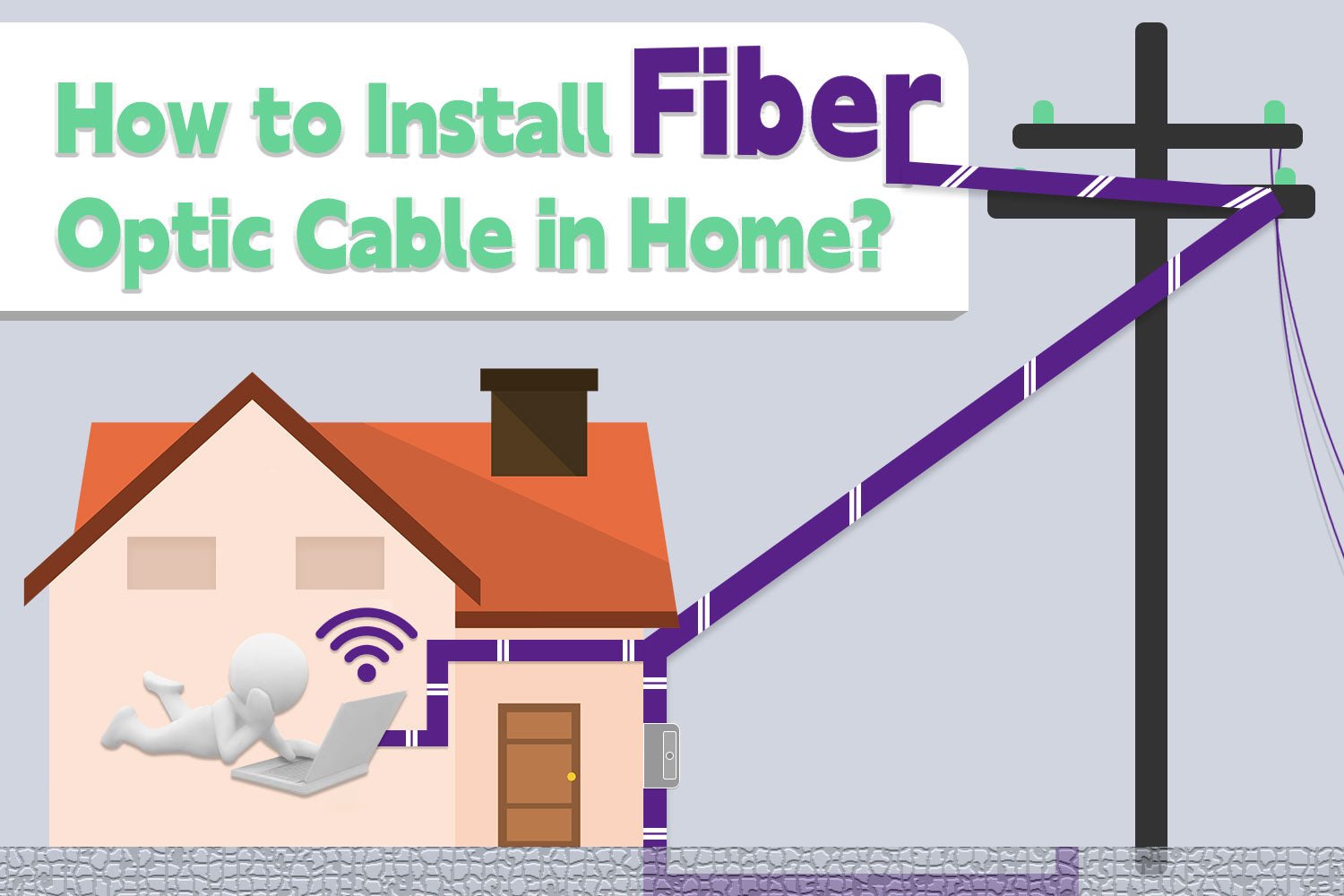
Performance metrics are generally strong, with most users reporting speeds close to advertised rates and low latency. [12] One user reported, “Getting about 3ms ping times with almost 0% packet loss. Its pretty solid. Not getting the gbps they said, but its damn fast.” [12]
However, some users have experienced technical issues, particularly with specific equipment configurations:
- “I switched to quantum fiber’s gigabit plan a couple months ago. I also work from home and run a home server with various downloads and hosted sites that put stress on the line. I had one hiccup where the firmware of their ONT/modem would crash if a certain port reached gigabit loads.” [12]
- “I have been using the Wi700k for almost 2 weeks now and speeds have been all over the place. I’m hoping I was just unlucky. I signed up for 500 and have readings in the 100’s.” [23]
DNS issues have been reported by some customers, with recommendations to use alternative DNS servers like 8.8.8.8 (Google’s public DNS) as a potential temporary fix for connectivity problems. [29]
Practical Applications
Key Points
Quantum Fiber’s high-speed, low-latency connections make it particularly well-suited for demanding digital activities. The symmetrical speeds provide significant advantages for content creators, remote workers, and gamers, while the multi-gig options support households with numerous connected devices. Business applications benefit from the consistent performance and enhanced security features, though some limitations exist for specialized business needs like static IP addresses.
Home Entertainment and Streaming

Quantum Fiber’s high-speed connections are particularly well-suited for home entertainment applications, especially streaming high-definition content. With plans offering symmetrical speeds ranging from 200 Mbps to 8 Gbps, the service can easily handle multiple simultaneous streams of high-definition content. [1] [5]
According to CNET, “According to the latest OpenVault Q4 2024 report, the average US household uses around 698Mbps in downloads, so the entry-level 500Mbps plan should offer enough speed for most households and a decent price across all markets.” [1] This indicates that even Quantum Fiber’s mid-tier plans provide sufficient bandwidth for typical household streaming needs.
The service’s multi-gig plans are especially valuable for households with multiple users streaming simultaneously. As Quantum Fiber explains, their high-bandwidth connections can “Support multiple devices like smart speakers and gaming consoles with fewer slowdowns thanks to massive bandwidth.” [7]
For 4K streaming specifically, which typically requires 25-50 Mbps per stream, even Quantum Fiber’s entry-level plans can support multiple simultaneous 4K streams. The higher-tier plans (3 Gbps and 8 Gbps) could theoretically support dozens of simultaneous 4K streams, though practical limitations like WiFi bandwidth and device capabilities would likely become the limiting factors before the internet connection itself.
The service’s low latency is also beneficial for interactive streaming applications like cloud gaming services. With ping times consistently in the 2-3ms range as reported by some users, [13] Quantum Fiber provides the responsive connection needed for these services to function optimally.
Gaming Performance

Gaming is one area where Quantum Fiber’s technical capabilities shine particularly bright. Online gaming requires not just bandwidth but also low latency, minimal jitter (variation in latency), and low packet loss – all areas where fiber connections typically excel.
Quantum Fiber specifically highlights gaming as a key use case for their service: “Whether you have a home-built gaming PC or a standard model straight out of the box, you need reliable internet for gaming to be the last one standing when battling it out in Fortnite or League of Legends.” [6]
The service’s symmetrical speeds are especially valuable for gaming, as Quantum Fiber explains: “Symmetrical speed refers to the ability to upload and download at the same rate. If your current service offers much slower upload speeds than download speeds, you’ll likely run into issues with video calls, VoIP, and online gaming.” [6]
Getting about 3ms ping times with almost 0% packet loss. Its pretty solid.
Customer reports confirm strong gaming performance, with one user noting “Getting about 3ms ping times with almost 0% packet loss. Its pretty solid.” [12] Another user reported, “Ping times to providers (MS, Google, Cloudflare) are consistently 2-3ms, as reported by my Ubiquity Dream Router.” [13]
For competitive gaming where every millisecond matters, Quantum Fiber’s low latency provides a significant advantage. The service’s multi-gig plans also offer ample bandwidth for gamers who simultaneously stream their gameplay to platforms like Twitch or YouTube, an increasingly common practice that demands high upload speeds.
Virtual reality gaming, which requires both high bandwidth and low latency to prevent motion sickness and maintain immersion, is also well-supported by Quantum Fiber’s connections. As the company notes, “With so many cool new wearable gaming devices on the horizon, there’s a lot of buzz around virtual reality. But if you invest in one of these gadgets, you may be in for a reality check if high latency turns the experience into a bust.” [6]
Smart Home Integration
22 devices
Average Smart Devices per US Home (2022)
The proliferation of smart home devices has significantly increased the demands on home internet connections. According to Quantum Fiber, “The average American home had 22 smart devices in 2022,” [7] indicating a growing need for high-bandwidth, reliable internet connections to support these devices.
Quantum Fiber’s service is well-positioned to support smart home ecosystems for several reasons:
- Bandwidth capacity: Even with dozens of connected devices, Quantum Fiber’s plans provide ample bandwidth to prevent bottlenecks.
- Reliability: The claimed 99.9% network reliability [10] [42] is crucial for smart home devices that need consistent connectivity to function properly.
- Low latency: For responsive smart home controls, the low latency of fiber connections ensures commands are executed quickly.
- Network management: The 360 WiFi system and app provide tools for managing network resources and prioritizing traffic for critical devices.
The service’s mesh WiFi system is particularly beneficial for smart home setups, as it provides consistent coverage throughout the home. As Quantum Fiber explains, “Mesh WiFi networks, like Quantum Fiber® 360 WiFiTM, can improve coverage by having nodes that act as small routers spread out throughout a home or business. Think of it as having several speakers throughout a space instead of only one. The result is reliable blanket coverage that helps your devices connect at top speeds.” [7]

However, some limitations exist. According to Quantum Fiber’s parental controls documentation, “WiFi access schedules are most effective on personal devices with screens, such as laptops, tablets, and phones. Smart home devices like thermostats, sprinkler systems, security cameras, etc. may not have consistent results.” [26] This suggests that some network management features may not work optimally with all smart home devices.
Remote Work and Productivity

The rise of remote work has placed new demands on home internet connections, and Quantum Fiber’s service characteristics make it particularly well-suited for work-from-home setups.
The symmetrical speeds are especially valuable for remote work applications like video conferencing, cloud-based collaboration tools, and remote desktop connections – all of which require significant upload bandwidth. As Quantum Fiber notes, their fiber-optic connections provide “upload speeds as much as 20 times faster than cable.” [42]
For video conferencing specifically, which has become a staple of remote work, the combination of high upload speeds and low latency ensures clear, responsive communication. While most video conferencing platforms require only 3-5 Mbps for high-definition calls, having additional bandwidth provides a buffer that helps maintain call quality even when other devices are using the network.
Fiber is the next generation of fast, with upload speeds as much as 20 times faster than cable.
Cloud-based productivity tools also benefit from Quantum Fiber’s performance characteristics. Activities like real-time document collaboration, accessing cloud storage, and syncing large files all perform optimally on high-speed, low-latency connections.
The reliability aspect is perhaps most critical for remote workers who depend on consistent internet access to perform their jobs. Quantum Fiber’s claimed 99.9% network reliability [10] [42] translates to minimal downtime that could disrupt work activities.
Business Applications
Quantum Fiber positions its service as suitable for both residential and small business customers, with the same pricing structure for both segments – an unusual approach in the telecommunications industry. [10]

For small businesses, Quantum Fiber highlights several key benefits:
- Reliability: The service claims 99.9% network reliability based on network uptime or availability, [10] [42] which is critical for business operations.
- Symmetrical speeds: Equal upload and download rates are particularly valuable for businesses using cloud services, video conferencing, and transferring large files.
- Security features: The service includes built-in cybersecurity features, which is important given that “Small businesses are attractive targets for cybercriminals who scan the web for unsecured networks and devices.” [41]
- Flexibility: With no annual contracts or commitments, businesses have the flexibility to adjust their service as needed. [42]
The service’s multi-gig speeds in select locations are designed to handle demanding business applications. As Quantum Fiber explains, “Fiber internet provides multi-gig speeds up to 8 Gigs in select areas. Fiber is the next generation of fast, with upload speeds as much as 20 times faster than cable*. Gigspeed connections can support rapid file transfers, cloud backups, simultaneous multi-user video conferencing, VoIP, point-of-sale transaction systems, video and music streaming, and general business use for small and mid-sized teams.” [42]
However, some limitations exist for business users. One significant issue reported by some customers is the lack of static IP addresses, which can be critical for businesses hosting their own services. As one frustrated business customer noted, “I was floored by their response of, ‘We don’t do static IP’s. Only dynamic.’ WAIT. WHAT!? Dynamic IP’s for a business line that would obviously REQUIRE static for hosting their own services (especially HTTPS, DNS (PTR’s!?), and email.)” [4]
For businesses requiring voice services, Quantum Fiber offers Connected Voice, a VoIP solution with two distinct plans: a Basic Service at $40/month and a Professional Service at $50/month/user. These plans include features like unlimited local and national long distance calling, voicemail to email, and mobile app integration for the Professional tier.
Security and Network Management
Key Points
Quantum Fiber offers a comprehensive suite of security features and network management tools through its 360 WiFi service, including anti-virus protection, malicious website filtering, and intrusion prevention. The service provides robust parental controls with content filtering and scheduling capabilities, though with some limitations. While the integrated security approach is convenient for most users, advanced users may find the system restrictive, and concerns exist about app functionality and technical support for security features.
Built-in Security Features
Quantum Fiber includes several built-in security features as part of its 360 WiFi service. These security measures are enabled by default and can be managed through the Quantum Fiber mobile app. [25]
Small businesses are attractive targets for cybercriminals who scan the web for unsecured networks and devices. Once they gain access, the result can be devastating.
The network security system consists of three primary protection mechanisms:
- Anti-virus protection: This feature “detects and destroys known viruses hiding in multiple file formats.” [25]
- Malicious website filter: This component “blocks the latest known phishing and scam websites.” [25]
- Intrusion prevention system: This system “prevents common cyber-attacks.” [25]
These security features are particularly valuable for small businesses, which Quantum Fiber notes are “attractive targets for cybercriminals who scan the web for unsecured networks and devices. Once they gain access, the result can be devastating. Data loss, ransomware, and network-crippling DDOS attacks cause disruptions that are expensive and time consuming.” [41]
The security system provides detailed tracking and reporting of blocked threats, allowing users to view specific information about each security incident through the mobile app. As the documentation explains, users can “Tap on Security Threats to see a full list of all threats that have been blocked, including malicious websites, viruses, and suspicious actions.” [25]
For business customers, Quantum Fiber emphasizes that their service enables “automated cloud backups that could protect your data and your business. Many businesses follow a ‘321 backup’ plan—three copies of all data with two stored on-site and one stored off-site—to ensure their data is secure and accessible in the event of a catastrophe or breach.” [42]
It’s worth noting that customers who choose to use their own WiFi equipment instead of Quantum Fiber’s provided devices will lose access to these built-in security features. [14] As the company explains, “It’s important to know that by using your own router, you won’t be able to access the security features and technical support that come with 360 WiFi.” [14]
Parental Controls and Content Management
Quantum Fiber’s 360 WiFi service includes comprehensive parental control features that allow users to manage internet access and content filtering for different devices on their network.
The parental control system offers preset profiles for children and teens with different default content blocking categories. For example, “If you selected the preset profile for child, the following content categories will be blocked by default: Explicit content, Gambling, Web advertisements, Mature, Online games, Online shopping, Social network.” [26]

The system provides several granular control options:
- WiFi access schedules: Users can create specific schedules to control when devices can access the internet.
- Content filtering: The system uses category algorithms to block inappropriate content.
- Website and app management: Users can manually block or allow specific websites and applications.
However, there are some important limitations to these controls:
- Mobile device bypass: “Parental controls only work for devices connected to 360 WiFi network. Mobile devices may bypass these restrictions by accessing the internet through a mobile carrier.” [26]
- Smart home device compatibility: “WiFi access schedules are most effective on personal devices with screens, such as laptops, tablets, and phones. Smart home devices like thermostats, sprinkler systems, security cameras, etc. may not have consistent results.” [26]
- Filtering accuracy: “Online content is filtered using category algorithms. These filters may not catch everything that you as the parent might want to block, or may in some cases block something you want to allow.” [26]
When content is blocked by the parental controls, users may see a “no connection” error, or the website or app simply will not load. [26]
Network Management Tools
Quantum Fiber provides several network management tools through its mobile app and 360 WiFi system, allowing users to monitor and control various aspects of their network.

The 360 WiFi system is described as “smart technology that learns how traffic moves across your network. After initial setup, the system adjusts to help improve coverage where you need it most.” [42] This self-optimizing capability helps ensure consistent performance throughout the coverage area.
Through the Quantum Fiber app, users can:
- Monitor connected devices: View all devices connected to the network and their usage patterns.
- Run speed tests: The app offers two types of speed tests – “speed-to-home” (measuring from the network to the modem) and “speed-to-device” (measuring the actual performance on a specific device). [5]
- Manage security settings: Toggle security features on and off and view detailed reports of blocked threats. [25]
- Control guest access: Create and manage guest networks with separate credentials and access limitations.
- Prioritize devices: Allocate bandwidth to ensure critical devices receive optimal performance.
For business customers, these management tools are particularly valuable. The service “offers a mobile app that allows businesses to manage network settings, control bandwidth, and provide secure guest WiFi.” [10]
However, there have been significant issues reported with the app functionality, particularly for users with newer WiFi 7 equipment. As one customer noted, “Quantum Fiber’s WiFi 7 equipment (W1700 model) is currently not fully compatible with their Quantum 360 app.” [28] Another user reported, “The wifi7 uses the regular QF app that you use for account access. Very limited customization. It’s crap, the Plume pods and app are way better but are not available for XGS (6500 ONT) customers.” [28]
Privacy Considerations
While Quantum Fiber provides robust security features, privacy considerations are also important for users evaluating the service. The company’s approach to network security involves monitoring network traffic to identify and block potential threats, which necessarily involves some level of data inspection.
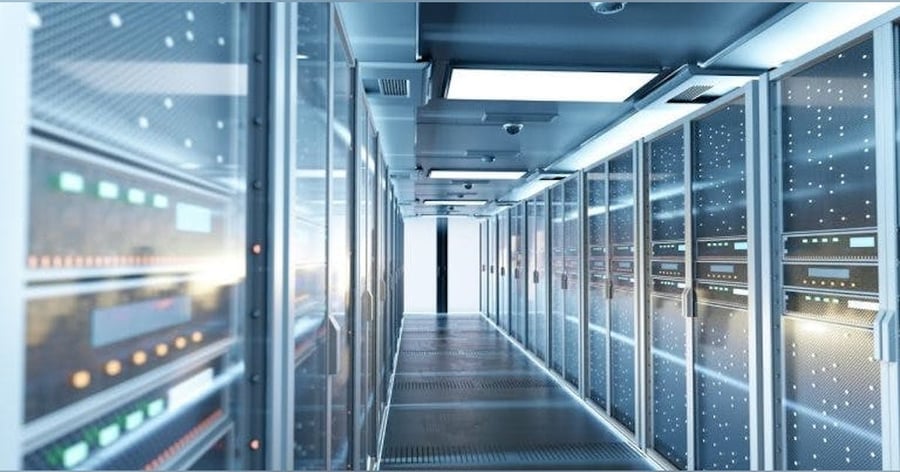
For users particularly concerned about privacy, Quantum Fiber recommends following best practices outlined by the Federal Communications Commission (FCC), including:
- Using unique, complex passwords for different accounts, especially sensitive ones like financial and medical records. [27]
- Implementing multi-factor authentication as an added layer of protection for important accounts. [27]
- Being cautious about downloading software, only doing so directly from manufacturers or verified app stores to avoid potential malware. [27]
- Practicing email security, including not opening emails or attachments from unknown sources and using spam filters. [27]
For users who prefer more control over their privacy and security, using personal networking equipment instead of Quantum Fiber’s provided devices is an option, though this means losing access to the integrated security features and technical support for WiFi-related issues. [14]
Some users have expressed concerns about the limited configurability of Quantum Fiber’s provided equipment from a security perspective. As one Reddit user noted, “Users recommend using third-party routers instead of Quantum Fiber’s provided equipment due to limited configuration options and potential security concerns.” [11]
Future Developments and Industry Context
Key Points
Lumen Technologies is positioning Quantum Fiber as a critical component of its broader strategy to build network infrastructure for the AI economy. The company is making significant investments in fiber expansion, though at a pace some analysts consider insufficient to compete with overbuilders. Technological innovations like WiFi 7 certification and multi-gig speeds demonstrate Quantum Fiber’s commitment to staying at the forefront of residential internet service, while strategic partnerships with cloud providers indicate an evolving focus on enterprise connectivity solutions.
Expansion Plans and Coverage Growth
500k locations
Quantum Fiber Annual Expansion Rate
Lumen Technologies, Quantum Fiber’s parent company, has outlined ambitious expansion plans for its fiber network, though the pace of this expansion has been questioned by some industry analysts.
As of early 2024, Lumen planned to build fiber to an additional 500,000 locations in 2024, matching its pace from 2023. [21] The company ended Q4 2023 with 3.7 million fiber-to-the-premises (FTTP) locations and 916,000 fiber subscribers, representing about 25% penetration. [21]
By Q1 2025, Quantum Fiber had grown to 1,116,000 fiber broadband subscribers, an increase from 952,000 in Q1 2024. [33] This growth trajectory reflects Lumen’s strategic focus on expanding its fiber footprint and transitioning customers from legacy services to the Quantum Fiber platform.

However, some industry analysts have expressed concerns about the pace of this expansion. As New Street Research analyst Jonathan Chaplin noted, “Our gripe is that they claim an 8-10MM location target for fiber deployment, with a starting point of 3.7MM, and they are only marching towards that target at a pace of ~500k per year. It will take a decade to get there at this pace. In the meantime, they are being targeted by overbuilders.” [21]
Lumen’s longer-term vision includes expanding Quantum Fiber to over 12 million locations across its multistate footprint. [36] The company is also exploring public-private partnerships (P3s) and helping communities leverage Broadband Equity Access and Deployment (BEAD) Program funding to accelerate this expansion. [36]
An analyst estimates that Lumen has a BEAD opportunity of about 1 million locations, potentially doubling with adjacent markets. [21] This federal funding could significantly impact the company’s expansion capabilities in underserved areas.
Technological Innovations
Quantum Fiber has demonstrated a commitment to technological innovation, particularly in the areas of network infrastructure and WiFi technology.
Lumen became the first company in the industry to achieve a Wi-Fi CERTIFIED 7™ device with its custom-developed solution.
One of the most significant recent innovations was Lumen becoming “the first company in the industry to achieve a Wi-Fi CERTIFIED 7™ device with its custom-developed solution” in January 2024. [17] These WiFi 7 devices offer superior coverage and performance compared to previous generations, with one device capable of covering up to 90% of a home’s square footage. [17]
The WiFi 7 technology represents a substantial upgrade over previous standards, offering “up to 8X faster wireless connection speeds for capable devices, up to 25% greater WiFi coverage compared to WiFi 6, over 100 concurrent devices can stream simultaneously, and lower latency with reduced transmission time.” [22]
On the network infrastructure side, Lumen is implementing several innovative approaches to increase capacity and efficiency:
- Partnering with Corning to use their latest fiber innovations, allowing up to four times more capacity from existing and new routes. [35]
- Leveraging photonics innovation for up to two times greater fiber efficiency. [35]
- Increasing overall network utilization to 70% by 2028, representing a significant infrastructure optimization strategy. [35]
These technological innovations are designed to support Quantum Fiber’s multi-gig service offerings, which now include plans up to 8 Gbps in select areas. [6] [17]
Strategic Direction and Market Positioning

Lumen Technologies is strategically positioning Quantum Fiber as part of its broader vision to build network infrastructure specifically for the AI economy. The company is focusing on three key strategic priorities: Drive Operational Excellence, Build the Backbone for AI, and Cloudify Telecom. [33]
As part of this strategy, Lumen is:
- Building critical fiber infrastructure for AI, with $8.5 billion in Private Connectivity Fabric (PCF) projects currently under construction. [34]
- Creating direct fiber access connections that eliminate cross-connect fees and simplify cloud-to-cloud networking for enterprises. [34]
- Developing a Network-as-a-Service (NaaS) offering that provides on-demand connectivity with real-time bandwidth and security management. [34]
- Targeting a $47 billion cloud voice market with its new Lumen Cloud Communications platform. [34]
25%
Quantum Fiber Penetration Rate
The company sees a total available market of at least $15 billion through its “cloudifying” efforts. [35] As Lumen explains, “The growth lever of building the backbone for AI represents a huge accretive opportunity for this company. We’re not only driving the strongest utilization of our network assets in the history of the company, we have unmatched capacity for growth at exactly the right time.” [35]
For Quantum Fiber specifically, the service is being positioned as a premium fiber internet provider with a focus on transparent pricing, no data caps, and top-tier customer service. [18] The brand differentiation from CenturyLink allows Lumen to target different market segments with tailored offerings.
Competitive Landscape
Quantum Fiber operates in an increasingly competitive fiber internet market, with both established providers and new entrants expanding their fiber footprints.
As the 11th-largest fiber internet network in the U.S., [18] Quantum Fiber faces competition from larger providers like AT&T Fiber, Verizon Fios, and Google Fiber, as well as regional providers and cable companies upgrading their networks to compete with fiber offerings.
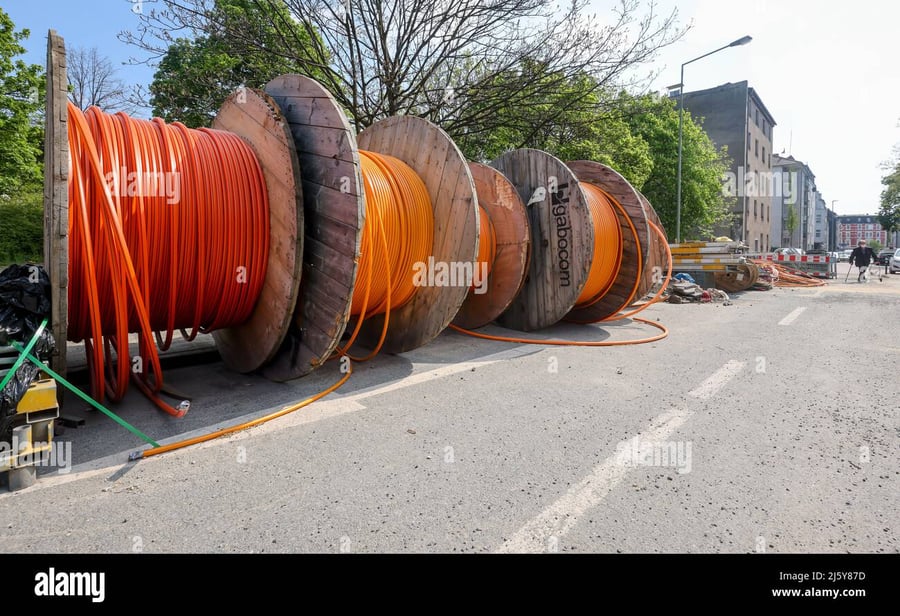
One significant competitive challenge for Quantum Fiber is its limited availability compared to some competitors. Covering only about 2% of U.S. households, [1] the service has a much smaller footprint than major cable providers and some competing fiber services.
However, Quantum Fiber has several competitive advantages:
- Symmetrical speeds: Unlike many cable providers that offer much slower upload than download speeds, Quantum Fiber provides equal upload and download rates across all plans. [1] [6]
- Price stability: The “Price for Life” guarantee, despite some inconsistent implementation, differentiates Quantum Fiber from providers that rely on promotional pricing models. [1] [3]
- No data caps or contracts: The absence of these restrictions provides flexibility that some competitors don’t offer. [1] [3]
- Advanced technology: With WiFi 7 certification and multi-gig speeds up to 8 Gbps, Quantum Fiber is at the forefront of residential internet technology. [17]
The competitive landscape is evolving rapidly, with significant investments in fiber infrastructure across the industry. As Lumen noted in its strategic communications, the company is being “targeted by overbuilders” [21] – competitors specifically targeting areas with existing fiber infrastructure for their own expansion.
To strengthen its competitive position, Lumen recently secured a debt agreement that extends maturities to 2029 and adds $1.32 billion in new financing, which the company claims will “clear the path for its transformation.” [21] As Lumen EVP and CFO Chris Stansbury stated, “In short, our capital structure is no longer a limiting factor in our transformation.” [21]
Conclusion and Recommendations
Key Points
Quantum Fiber offers a technically superior internet service with impressive speed capabilities, reliability, and advanced features like WiFi 7 technology. However, the limited availability, inconsistent customer service, and some equipment issues present significant challenges. For consumers within its service areas, Quantum Fiber represents a compelling option worth consideration, particularly for households with high bandwidth needs or those engaged in activities requiring symmetrical speeds and low latency.
Service Strengths and Limitations
Strengths:
- Technical Performance: Quantum Fiber’s fiber-optic infrastructure delivers exceptional speed and reliability. With symmetrical speeds up to 8 Gbps in select areas [1] [6], the service significantly outperforms traditional cable and DSL connections. Customer reports consistently praise the actual performance, with many users experiencing speeds close to advertised rates and extremely low latency (2-3ms) [12] [13].
- Value Proposition: Despite premium positioning, Quantum Fiber offers competitive pricing with no data caps, no contracts, and included equipment [1] [3]. The “Price for Life” guarantee, when honored, provides pricing stability that many competitors don’t match.
- Advanced Technology: As the first provider to receive WiFi 7 certification [17], Quantum Fiber demonstrates a commitment to technological innovation. The 360 WiFi system with mesh networking capabilities provides comprehensive coverage for modern homes.
- Security Features: The built-in security suite, including anti-virus protection, malicious website filtering, and intrusion prevention [25], offers valuable protection, particularly for less technically savvy users.
- Symmetrical Speeds: Equal upload and download rates across all plans [1] [6] provide significant advantages for activities like video conferencing, cloud backup, content creation, and online gaming.
When it works, it’s great, but when it’s down, you’re easily out for 3 days because some tech unplugged you up the street.
Limitations:
- Limited Availability: Covering only about 2% of U.S. households [1], Quantum Fiber’s limited footprint represents its most significant limitation. Even within its 16-17 state service area, availability varies dramatically by city [20].
- Inconsistent Customer Service: Despite scoring relatively well in industry satisfaction metrics [1] [3], individual customer experiences with support vary widely, with many reporting extremely long wait times and difficulty resolving issues [29] [31].
- App and Equipment Issues: Recurring problems with the Quantum Fiber mobile app [11] [28] and compatibility issues between newer equipment and management software create frustration for many users.
- Installation Concerns: Some customers report invasive installation practices without clear communication [11] and difficulty scheduling or rescheduling appointments.
- “Price for Life” Inconsistencies: Despite marketing this guarantee, multiple customers report unexpected price increases [13], undermining trust in this key differentiator.
Ideal Use Cases
Quantum Fiber is particularly well-suited for certain user profiles and scenarios:
- High-Bandwidth Households: Families with multiple users simultaneously streaming, gaming, and working from home will benefit from the high bandwidth and symmetrical speeds. As CNET notes, “According to the latest OpenVault Q4 2024 report, the average US household uses around 698Mbps in downloads, so the entry-level 500Mbps plan should offer enough speed for most households.” [1]
- Remote Workers: The symmetrical speeds, reliability, and low latency make Quantum Fiber ideal for professionals working from home, particularly those who regularly use video conferencing, access cloud storage, or transfer large files.
- Content Creators and Streamers: Users who upload videos, stream gameplay, or otherwise create and share content will particularly benefit from the high upload speeds. As Quantum Fiber notes, “Are you an aspiring streamer on a site like Twitch? Your symmetrical speeds are especially critical since you’ll be uploading and downloading data simultaneously.” [6]
- Competitive Gamers: The consistently low latency (2-3ms) [13] and minimal packet loss provide a competitive advantage for serious gamers.
- Smart Home Enthusiasts: Households with numerous connected devices will appreciate the bandwidth capacity and mesh WiFi coverage, though some network management features may not work optimally with all smart home devices [26].
- Small Businesses: The reliability, symmetrical speeds, and security features make Quantum Fiber suitable for many small business applications, though the lack of static IP options may be limiting for businesses hosting their own services [4].
Recommendations for Potential Customers
For consumers considering Quantum Fiber, these recommendations may help inform their decision:
- Verify Actual Availability: Given the limited and variable coverage, potential customers should verify service availability at their specific address rather than relying on general area information.
- Understand Installation Requirements: Be prepared for the installation process, which may involve drilling holes for cable routing [37] [39]. Ask detailed questions about what modifications will be needed before scheduling installation.
- Consider Equipment Options: While Quantum Fiber’s provided equipment offers integrated security and management features, technically savvy users might prefer using their own router for greater control, despite losing access to some features [14].
- Match Plan to Needs: Most households will find the 500 Mbps or 1 Gbps plans sufficient [1]. The multi-gig options (3 Gbps and 8 Gbps) are only necessary for the most demanding use cases and have very limited availability [3].
- Get Price Guarantees in Writing: Given reports of “Price for Life” inconsistencies [13], potential customers should ensure any price guarantees are clearly documented.
- Prepare for Potential Support Challenges: While many customers report excellent experiences, being prepared with alternative contact methods and patience for potential support wait times is advisable based on reported experiences [29].
- Consider Competitive Options: In areas with multiple fiber providers, comparing specific offerings, customer service reputations, and pricing structures is worthwhile, as the competitive landscape continues to evolve rapidly.
Final Assessment
Quantum Fiber represents a technically impressive internet service with significant advantages for users with demanding connectivity needs. The combination of symmetrical multi-gigabit speeds, reliability, and advanced features like WiFi 7 technology positions it as a premium option in the residential and small business internet market.
However, the limited availability, inconsistent customer service experiences, and some equipment management challenges mean that the actual value proposition varies significantly depending on individual circumstances and location.
For consumers within Quantum Fiber’s service areas who prioritize performance and can navigate the potential customer service challenges, the service offers a compelling option that should meet or exceed the connectivity needs of even the most demanding digital households. As Lumen continues to expand the Quantum Fiber footprint and address customer experience issues, the service has the potential to become an increasingly significant player in the U.S. internet service provider landscape.




